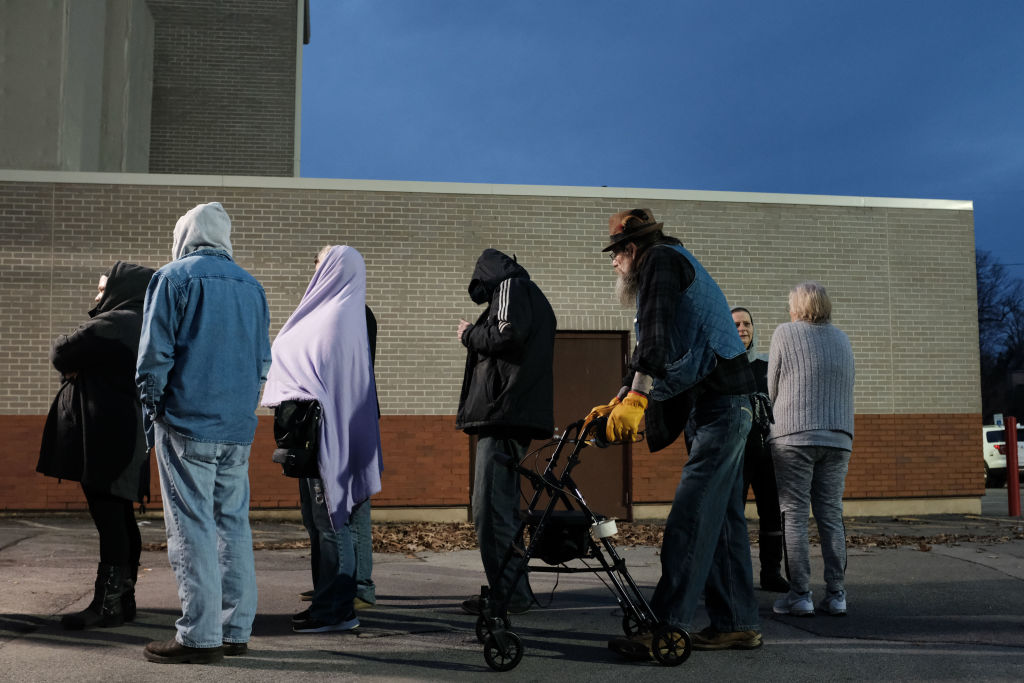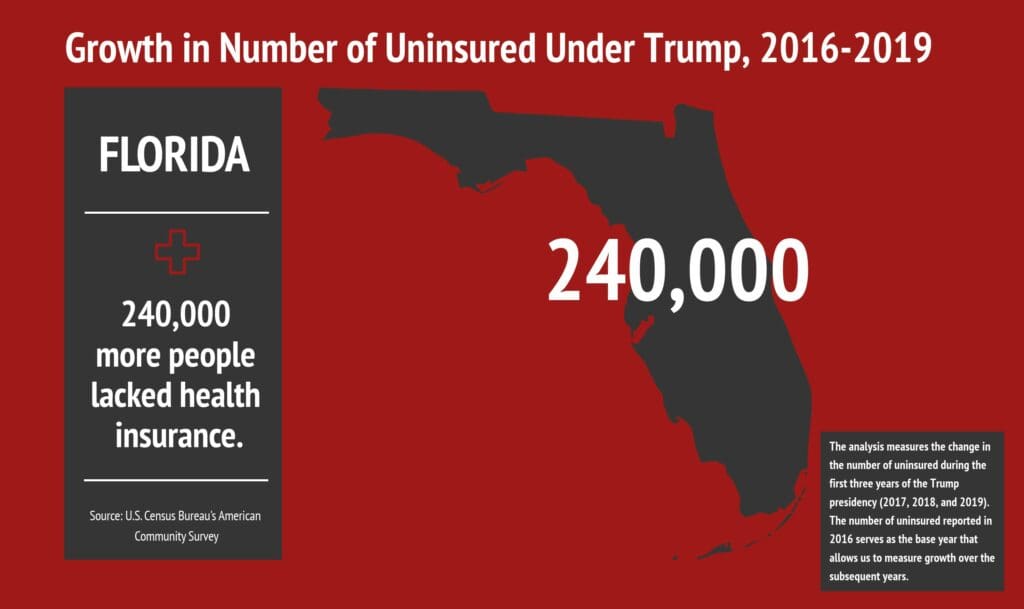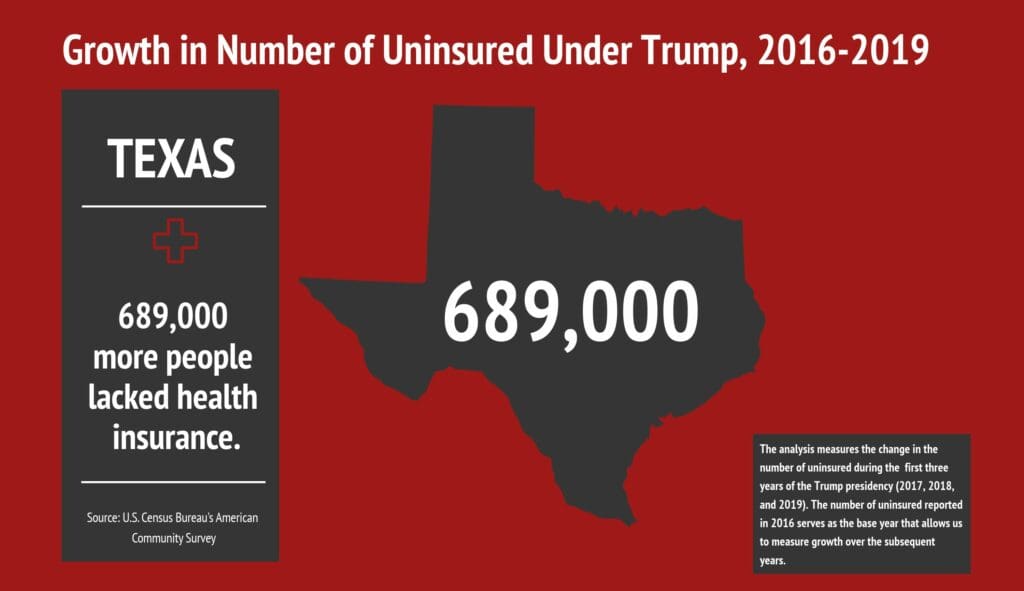Latest News
Before COVID-19, the Number of Uninsured Americans Grew by 2.3 Million Under Trump
Battleground states, including Florida, Arizona, North Carolina and Ohio, saw dramatic increases in the number of uninsured.

During Donald Trump’s first three years in office, there was a 2.3 million increase in the number of uninsured Americans, according to a Capital & Main analysis of U.S. Census Bureau data released today.
Co-published by USA Today.
These include hundreds of thousands of people in such battleground states as Florida, Arizona, Georgia, North Carolina and Ohio, as well as in Michigan and Minnesota. The number of uninsured grew by nearly 1.6 million people in 13 states identified as swing states by The Cook Political Report.
During his 2016 campaign, Trump promised to repeal and replace Obamacare and, once elected, he vowed that everyone would have health insurance.
Health care was a major issue in the 2018 midterm elections and could remain a salient one in an election that is only seven weeks away. The COVID-19 pandemic has led to massive job losses in a country where 55 percent of health care coverage is tied to employment. One study estimated that 5.4 million American workers lost their health insurance between February and May of 2020.
Today’s data release makes clear that U.S. residents were already hemorrhaging health insurance even before COVID. By far, the largest growth in the number of uninsured was in Texas, where the count swelled by 689,000 between 2016 and 2019.
In Florida, the number of uninsured grew by 240,000 during Trump’s first three years. Ohio, North Carolina and Arizona saw the number of uninsured in each of their states increase by more than 110,000. Iowa, Wisconsin, Michigan and Minnesota all saw statistically significant increases in the numbers of uninsured. California, which is not a presidential battleground state, also saw a 158,000 increase in the numbers of uninsured residents.
Across the country, the uninsured rates grew by a statistically significant amount in 33 states between 2016 and 2019, while four states saw a statistically significant decline in the percentage of its residents who lacked any form of health insurance.
The growth in the number of uninsured people came despite the fact that employment grew between 2016 and 2019. The increases since 2017 in the percentage of people lacking health insurance follow six straight years of decline that began in 2010 with the implementation of the Affordable Care Act (ACA) under President Barack Obama. The percentage of the country’s population who lack health insurance jumped from 8.6 percent in 2016 to 9.2 percent in 2019, according to the annual American Community Survey, which was conducted during 2019.
Health care experts attribute the loss in health coverage to the Trump administration’s attack on Obamacare, including the repeal of the individual mandate that people have health coverage or pay a penalty. In addition, the administration’s “public charge” rule that allows the government to deny green cards and visas to immigrants that have received public assistance, such as Medicaid, has likely prevented immigrants from gaining access to health insurance. Another barrier to access has been the administration’s cuts to outreach to people wishing to enroll in the ACA marketplace.
The 35 states that have expanded Medicaid—a federally and state-funded insurance program for low-income families—have made the greatest progress in increasing health coverage, and are better situated to weather the COVID pandemic, according to the Center for Budget and Policy Priorities.
Maps by Marco Amador
Copyright 2020 Capital & Main

-

 Latest NewsDecember 8, 2025
Latest NewsDecember 8, 2025This L.A. Museum Is Standing Up to Trump’s Whitewashing, Vowing to ‘Scrub Nothing’
-

 Latest NewsDecember 10, 2025
Latest NewsDecember 10, 2025Capital & Main, L.A. Times Win Sidney Award for Reporting on Child Farmworkers
-

 StrandedDecember 9, 2025
StrandedDecember 9, 2025Giving Up on the Dream: Asylum Seekers Try Other Options in Mexico
-

 Locked OutDecember 16, 2025
Locked OutDecember 16, 2025This Big L.A. Landlord Turned Away People Seeking Section 8 Housing
-

 Column - California UncoveredDecember 12, 2025
Column - California UncoveredDecember 12, 2025They Power the U.S. Economy, But Will Struggle to Afford Health Care
-

 The SlickDecember 19, 2025
The SlickDecember 19, 2025‘The Poor Are in a Very Bad State’: Climate Change Accelerates California’s Cost-of-Living Crisis
-

 Column - State of InequalityDecember 11, 2025
Column - State of InequalityDecember 11, 2025A Little Place Called Home?
-

 Locked OutDecember 23, 2025
Locked OutDecember 23, 2025Section 8 Housing Assistance in Jeopardy From Proposed Cuts and Restrictions






